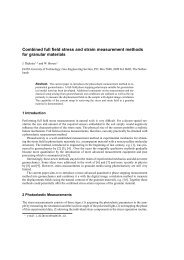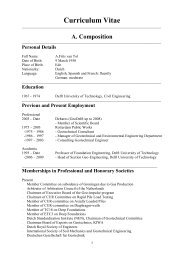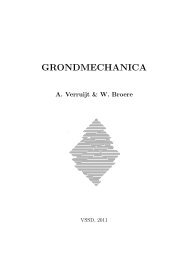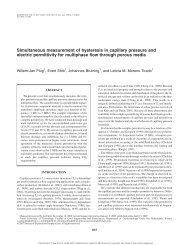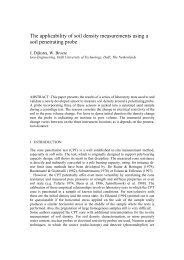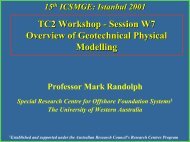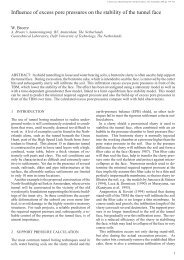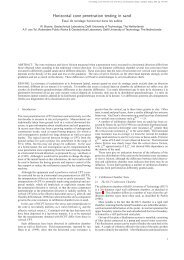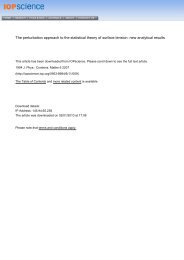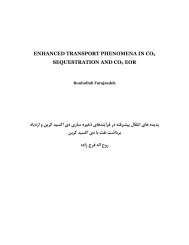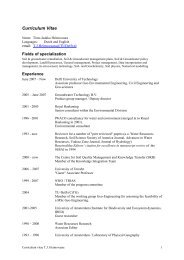Tunnel Face Stability & New CPT Applications - Geo-Engineering
Tunnel Face Stability & New CPT Applications - Geo-Engineering
Tunnel Face Stability & New CPT Applications - Geo-Engineering
Create successful ePaper yourself
Turn your PDF publications into a flip-book with our unique Google optimized e-Paper software.
14 2. <strong>Stability</strong> Analysis of the <strong>Tunnel</strong> <strong>Face</strong>Safety Factor η2BMembrane model ∆s = 40kPa1.510.06AA: ∆s = 20kPa,τ F = 15PaB: ∆s = 40kPa,τ F = 15PaC: ∆s = 20kPa,τ F = 80PaMembrane model ∆s = 20kPa0.2 0.6 2 6 20d 10 (mm)Figure 2.13: Effect of slurry infiltration on the stability safety factor for a 10m diameter slurryshield [8]Csoils this has little effect as it will only increase the infiltration depth of the slurry. Increasingthe bentonite content and thereby the shear strength of the slurry results in a more effective filtercake and increases the safety factor in such conditions. The effects of slurry infiltration will becovered in more detail in section 2.2.3.The same authors also use a wedge model for the face stability of earth pressure balanceshields. In cases where the piezometric head within the excavation chamber is lower than thatof the surrounding soil, a seepage flow will develop in the direction of the tunnel. This seepageforce is obtained from a separate three-dimensional finite element seepage-flow calculation andadded to the force equilibrium of the wedge model [7]. The results of this study are presentedas four dimensionless factors which contain the dependence of the minimal support pressure ontunnel diameter, effective weight of the soil, cohesion and effective support pressure s ′ .In 1988 Mohkam [119] already described a limit equilibrium model using a roughly logspiralshaped wedge which has to be obtained from a variational analysis over the unknownposition w(x, y), angle θ(x, y) and total stress σ(x, y) of the failure plane. The model alsoincludes the effect of the reduced effectiveness of the slurry pressure due to infiltration using anon-linear relation between infiltration distance and effective slurry pressure. The large numberof unknowns present in the model leads to a highly iterative solution procedure and a ratherunwieldy model. The model can be substantially simplified by prescribing the shape of thefailure body and the total stress field and in that case it becomes very similar to the other wedgemodels.A problem common to all global stability models described above is that they are onlysuited for homogeneous soil conditions. Heterogeneity of the soil above or in front of the TBMremains a problem. While practical experience shows that the stability of the face is often aproblem in heterogeneous soils [47, 112], more so than in homogeneous soils, at the same timeit cannot be quantified straightforwardly by any of those models. In such conditions one mayattempt to establish upper and lower limits to the support pressure by simplifying the geometryof the problem or using averaged soil properties. There are however no clear methods to makesuch simplifications or obtain such averages and a certain amount of engineering judgementis necessary. A stability model that deals with layered soils, especially at the face, is clearly



